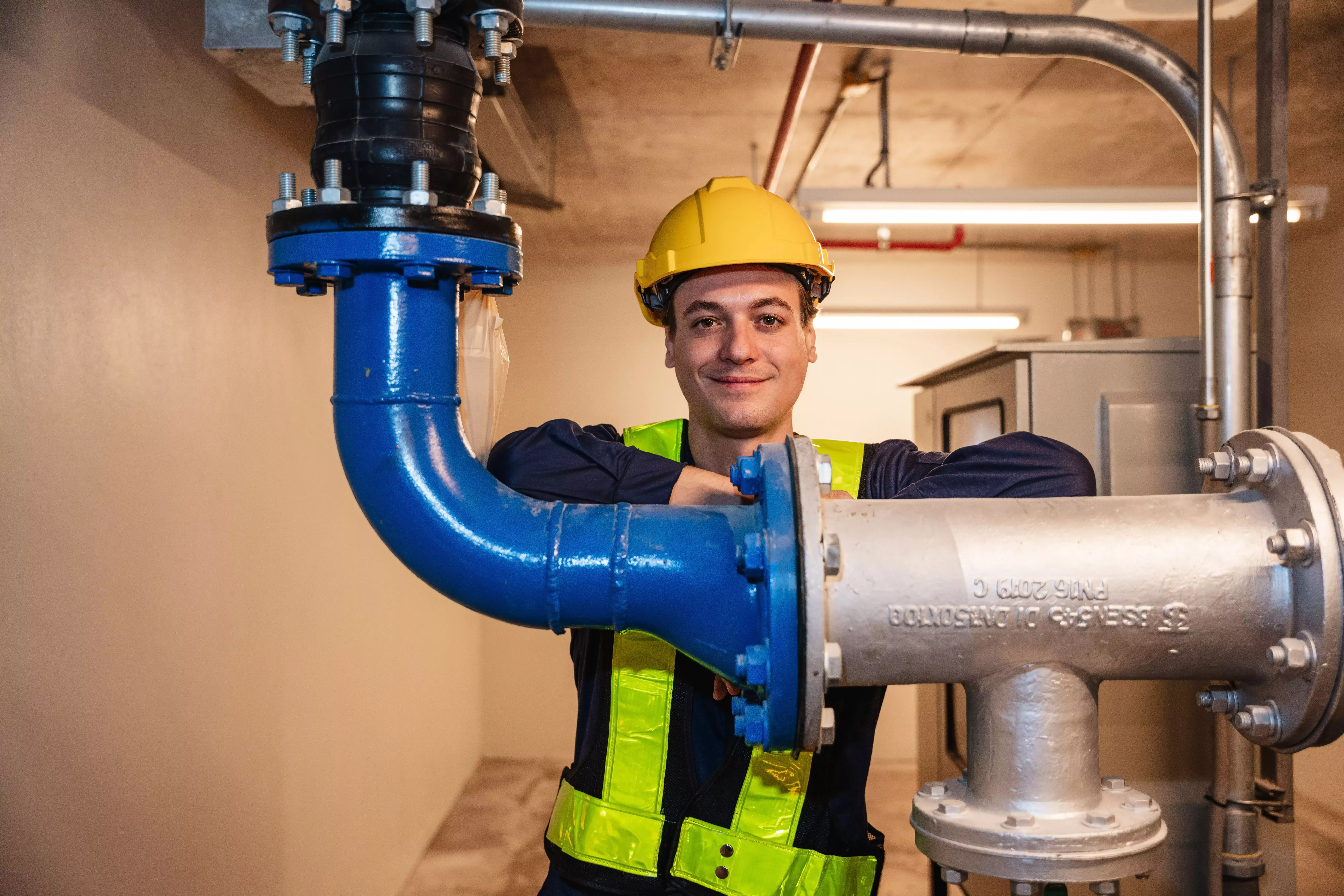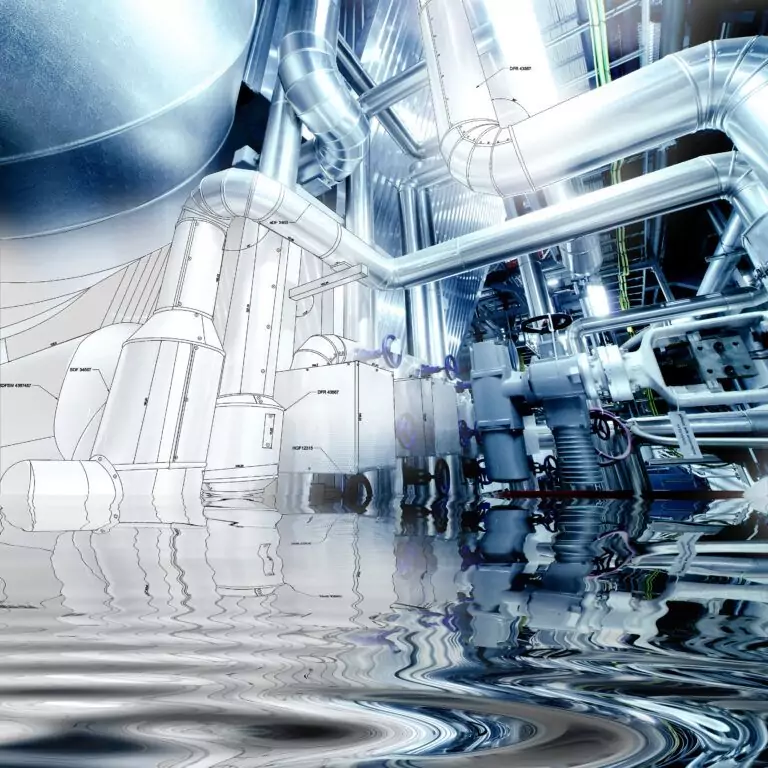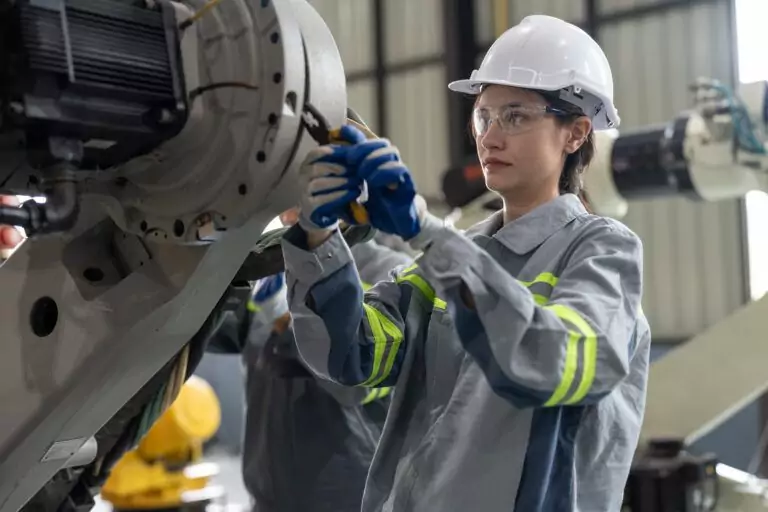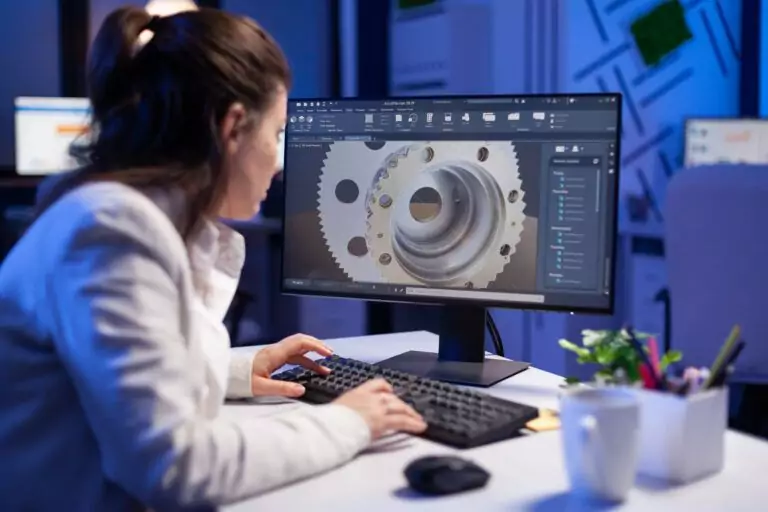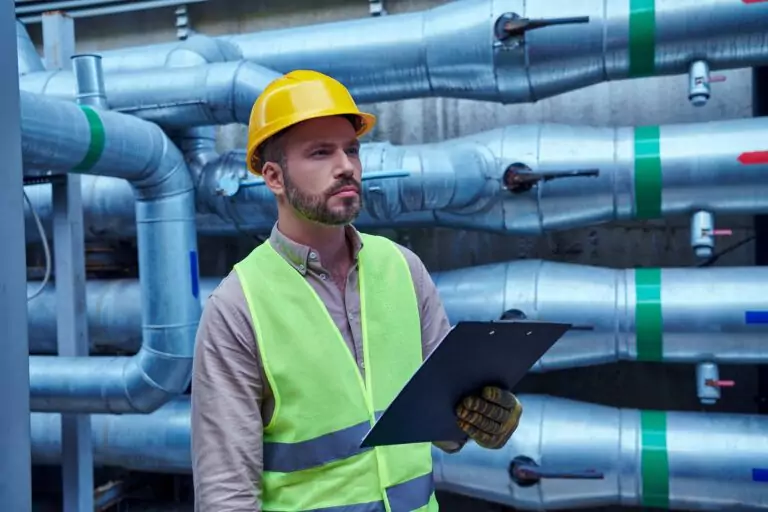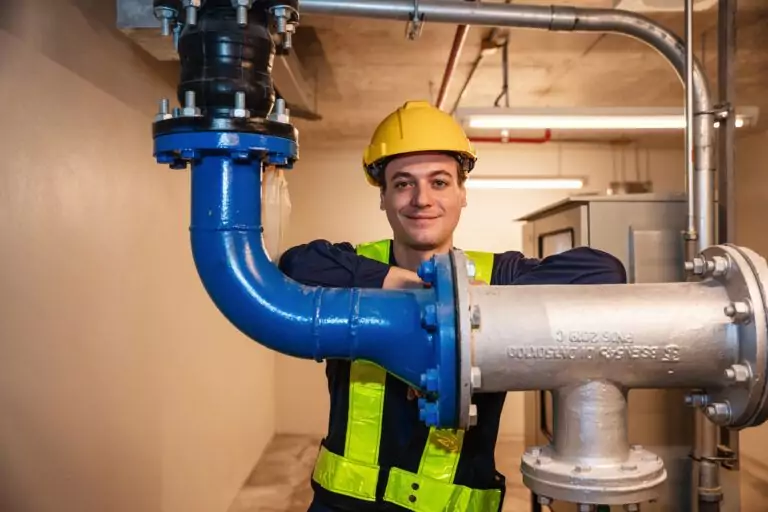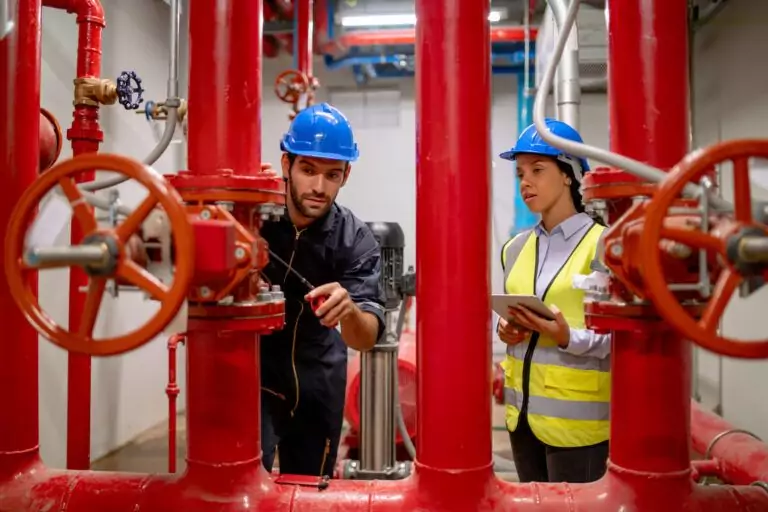Breaking into piping design? Takes more than drawing pipes or reading code books. Way more.
The field has evolved dramatically. Digital transformation changed everything. So did sustainability mandates. Plus, multi-disciplinary projects keep getting more complex.
You need technical basics combined with comprehensive software proficiency across multiple 3D modelling platforms, collaboration skills for distributed engineering teams, and awareness of emerging energy technologies, including carbon capture, hydrogen systems, and renewable integration. Most training programs provide limited coverage of these critical modern competencies.
This comprehensive guide organises piping design skills into clear categories, including core technical knowledge, digital design tools, collaborative abilities, problem-solving approaches, industry-specific expertise, quality assurance standards, and sustainability awareness, with practical guidance for skill development at each career level.
Skill requirements differ significantly by experience level. Junior piping designers beginning their careers need foundational technical knowledge and software basics. Intermediate designers handling independent design assignments need broader problem-solving capabilities and multi-disciplinary coordination skills. Senior designers leading complex industrial projects require comprehensive technical mastery, mentoring abilities, and strategic judgment.
Companies are hiring piping designers faster than schools can train them. Demand keeps growing across petrochemical projects, mineral processing plants, renewable energy facilities, and carbon capture projects that require specialised piping engineering expertise.
Regional Note: Engineering codes, standards, and regulations vary significantly by jurisdiction. This guide references commonly used ASME standards, but Canadian provinces may require CSA standards or additional provincial regulations. Always verify applicable codes and standards for your specific location and project type before application.
Disclaimer: Technology platforms, software versions, industry standards, and job market requirements change frequently. All skill recommendations reflect current 2025 industry practices, but should be verified against specific employer requirements and regional market conditions before making career or educational decisions.
Core Technical Skills That Form Your Foundation
Start by mastering fundamental piping engineering principles. Everything else you’ll learn builds on a solid understanding of piping codes, material selection criteria, stress analysis concepts, and industry documentation standards.
Don’t skip this technical foundation to chase software skills. Many junior designers make this mistake by prioritising 3D modelling over engineering fundamentals. Weak technical basics undermine your entire piping design career, regardless of what other skills you develop.
Piping Engineering Principles and Design Knowledge
You need working knowledge of ASME B31.3 for process piping systems and ASME B31.1 for power piping applications. Focus on practical understanding rather than rote memorisation. Know when each code applies to specific industrial services, identify the important requirements for material selection and pressure design, and know where to find specific provisions when you need them during actual design work.
Note: This article references ASME codes commonly used internationally. However, Canadian projects may be governed by CSA standards such as CSA B51 for pressure piping, CSA Z662 for oil and gas pipeline systems, provincial regulations, or specific owner requirements. Always verify which standards apply to your jurisdiction and projects.
Pipe stress analysis basics matter critically even if you’re not performing stress calculations yourself. Know when piping systems require formal stress analysis. Temperature cycling triggers it. So do thermal expansion concerns, heavy components creating significant loads, and seismic design requirements mandated by applicable codes in your jurisdiction.
Material selection drives everything downstream. Pick the wrong material and you’ll deal with fabrication problems, welding issues, and installation headaches. Process conditions determine material choices. You need to think about maximum operating temperature limits, what the process fluid does to metal, pressure ratings for system design conditions, and code allowable stresses that govern pressure design calculations.
Equipment layout principles affect everything you design afterwards. Pipe routing complexity, structural steel requirements, and construction accessibility all flow from how you arrange equipment. Learn the equipment arrangement logic that follows process flow sequences. Think about maintenance access for equipment removal and servicing. Consider how equipment spacing decisions impact total installation costs across the entire facility.
Isometric drawing creation and interpretation is daily work. You’ll produce accurate isometrics showing dimensions, materials, weld counts, support locations, and special requirements. Your drawings must communicate clearly to fabrication shops.
Engineering Mathematics and Technical Documentation
Practical fluid mechanics application matters more than theoretical derivations for daily piping design work. You’ll use Bernoulli’s equation to analyse system energy balances, friction factor calculations from Moody diagrams or Colebrook equations, and flow regime concepts distinguishing laminar from turbulent flow conditions. All applied to solve actual piping system design problems involving pressure drop and flow distribution.
Thermodynamics concepts help you design temperature-dependent piping systems correctly. You’ll need thermal expansion calculations for loop sizing and support design. Insulation requirements that maintain process temperatures efficiently. Heat tracing sizing for freeze protection and temperature maintenance. Steam system design, including condensate removal and pressure reduction stations.
Reading and creating P&IDs forms fundamental piping designer competency. Piping and instrumentation diagrams show process flow sequences, equipment connections and nozzle orientations, control schemes for process regulation, and safety systems including relief devices and shutdown valves that protect personnel and equipment.
Bill of materials development demands rigorous accuracy throughout quantity takeoffs and component specifications. Your material takeoffs drive procurement decisions and cost estimates that establish project budgets and schedules. BOM errors cost serious money and create schedule delays when fabrication shops order incorrect materials or insufficient quantities for construction.
Fabrication shops can lose tens of thousands of dollars because a piping designer miscounts speciality fittings or specifies incorrect materials. Develop systematic approaches to counting components using software reporting tools and manual verification checks. Account for shop versus field welds that affect spool piece sizing and fabrication costs. Always verify quantities before releasing bills of materials for procurement.
Digital Tools and Software Proficiency for Modern Workflows
Software skills have become non-negotiable for modern piping design careers. Many candidates possess strong code knowledge but lack the practical 3D modelling proficiency needed for actual project delivery. Software competency must complement rather than replace technical fundamentals.
Modern industrial projects use integrated 3D plant design modelling software, digital asset managementDigital asset management (DAM) is a business process to organize, store, and process digital information related to real-world assets. In th... platforms for engineering data, and specialised analysis tools for stress calculations and hydraulic simulations. These technologies have transformed piping design workflows over the past two decades.
3D Modelling and CAD Software Skills
AVEVA E3D and PDMS dominate major industrial projects across the petrochemical, mineral processing, and energy sectors. Large-scale facility designs for these industries typically use AVEVA tools due to their comprehensive capabilities for managing complex multi-discipline models, extensive piping specification libraries, and robust clash detection features.
AutoCAD Plant 3D appears on many mid-sized industrial projects and provides effective design capabilities for facilities with moderate complexity. This Autodesk platform offers accessible learning curves for designers transitioning from 2D CAD while delivering 3D modelling functionality suitable for projects that don’t require the extensive features of AVEVA enterprise platforms.
The critical difference between intelligent 3D modelling and basic CAD drafting matters enormously. Modern plant design platforms embed engineering data in models. Piping specifications, material grades, pipe sizes, and equipment connections become queryable databases supporting automated drawing generation, material takeoffs, and asset information management throughout project lifecycles.
Navisworks or equivalent model review tools let you navigate large integrated models, perform clash detection, and coordinate across disciplines. Learn to use these tools well because clash resolution is constant work on complex projects.
Digital Asset Management and Analysis Software
Working with the AVEVA Asset Information Management suite or similar enterprise information management systems has become increasingly common on major industrial projects. These platforms manage engineering data throughout project lifecycles from initial design through construction and operations. Owners maintain comprehensive digital asset records that support plant maintenance and modification activities for decades.
Digital twin concepts are reshaping how industrial facilities are designed and operated by creating virtual replicas that mirror physical plant assets. Your piping design models can become the foundation for operational digital twins. These enable real-time performance monitoring, predictive maintenance scheduling, and operational optimisation strategies that improve facility efficiency and reliability.
CAESAR II or similar pipe stress analysis software represents the industry standard for piping flexibility analysis and support load calculations. You may not perform stress analysis yourself as a junior designer, but you know the software capabilities and input requirements. This helps you create piping models that analyse correctly and coordinate support locations with structural engineers based on calculated loads and displacements.
Multi-Discipline Collaboration and Integration Abilities
Piping design never happens in isolation on integrated industrial projects. You’ll coordinate constantly with process engineers who establish flow requirements, civil engineers who design foundations, structural engineers who provide support steel, electrical engineers who specify heat tracing systems, and instrumentation engineers who define instrument locations and connections. Projects succeed or fail based on how well disciplines work together.
Working Across Engineering Disciplines
Process engineers establish your line sizing and material specifications. You’ll coordinate with them continuously throughout design development. They establish flow rates, operating pressures, temperatures, and material requirements based on process conditions and fluid properties. These directly determine piping code requirements, material selection criteria, and system design parameters.
Civil and structural teams need your loading information from pipe weight, contents, and dynamic forces. They design supports and tell you where structural steel or concrete is available. The interface goes both ways. You provide loads. They provide support locations. Both sides need to understand the other’s constraints.
Electrical engineers come into play on heat tracing system design and power requirements. This occurs frequently on cold climate projects and certain process applications requiring temperature maintenance or freeze protection. Water lines, instrument impulse lines, and process piping systems containing fluids that solidify at ambient temperatures all need heat tracing consideration.
Communication and Distributed Team Collaboration
Explaining piping design decisions clearly to project managers and clients becomes increasingly necessary as you advance. Technical rationale matters for engineering justification. But explaining cost implications, schedule impacts, and operational considerations in business terms helps stakeholders make informed decisions about design alternatives and trade-offs.
Active listening to understand requirements from various stakeholders prevents wasted design work and costly rework later. Engineers sometimes start designing before fully understanding what’s needed. They make assumptions about unstated requirements or misinterpret stakeholder priorities. The result? Designs that meet technical codes but fail to address actual project needs.
Working across time zones and geographic locations has become standard practice for modern industrial projects. You might work with process engineers in Houston, structural engineers in Calgary, and procurement teams in Oman. This requires effective asynchronous communication strategies, clear documentation practices, and collaborative digital platforms that enable seamless coordination despite geographic separation.
Building professional relationships with team members you may never meet in person requires intentional effort. Regular video conferencing establishes personal connections. Proactive communication keeps stakeholders informed of progress and issues. Reliable delivery of quality work on schedule builds trust and credibility with distributed team members.
Problem-Solving and Critical Thinking for Real-World Challenges
Real industrial projects present messy problems that textbooks never cover. Equipment doesn’t fit where originally planned due to foundation conflicts or structural interferences. Multiple disciplines have conflicting requirements for the same physical space. Construction teams discover field issues that your design didn’t anticipate during the conceptual or detailed engineering phases.
Troubleshooting Design Issues and Constraints
Piping routing conflicts in congested areas represent constant work on complex industrial projects with limited available space. You’ll find ways to route pipes through spaces that initially seem impossible. Use vertical offsets strategically. Coordinate support locations with structural steel arrangements. Accept slightly longer routing paths to avoid significant interferences. Collaborate with other disciplines to optimise overall facility layout.
Alternative solutions become necessary when the ideal design approach isn’t feasible. This happens regularly on brownfield modifications and congested greenfield facilities. Code-compliant pipe slopes might not work with existing grades or equipment nozzle elevations. Standard support spacing requirements might conflict with structural beam locations. You need engineering judgment to develop acceptable alternatives that maintain system integrity.
Catch constructability issues before they reach the field. This saves enormous time and money by preventing costly rework during construction. Ask critical questions during design. Can welders actually access that weld joint for proper welding and inspection? Can the piping spool piece be transported to the site and installed with available rigging equipment? Is there adequate rigging clearance for lifting heavy components into the final position without interference?
Value Engineering and Cost-Conscious Design
Design decisions impact total installation costThe total installed cost refers to the final cost of designing, fabricating and building a capital project or industrial asset. Various phas.... Material choices, routing paths, fabrication complexity, and installation requirements all affect project costs. Know how your decisions translate to dollars.
Reducing material costs without compromising system quality requires knowledge of available material options and their trade-offs. Cost, performance, and availability all factor into smart decisions. Choose standard components versus custom fabrication. Pick common materials versus specialised alloys. Optimise routing that eliminates unnecessary fittings. These create value through informed engineering decisions rather than default conservative specifications.
Balance initial capital cost with long-term maintenance and operational costs. Think beyond construction completion to total lifecycle economics. That expensive alloy piping material might last 30 years with minimal maintenance and superior corrosion resistance. The cheaper carbon steel option requires replacement in 10 years due to corrosion damage. The premium material becomes more cost-effective over the facility’s operating life.
Constructability and Practical Field Considerations
The installation sequence and access for construction crews make installation smoother and faster. Design piping systems that accommodate practical construction methods. Can heavy piping spools be rigged into position with available crane access and lifting capacities? Is there adequate laydown space for fabricated materials before installation? Can installation proceed logically, or does the design create a sequence that requires rework or temporary supports?
Provide adequate clearance for maintenance and future modifications. This shows maturity. That perfectly tight routing might be impossible to maintain. Leave reasonable access for valve operation, equipment removal, and likely future changes.
Field feedback teaches valuable lessons. When construction reports problems, listen and understand root causes. Incorporate what you learn from field feedback into design practices. This improves your work continuously.
Industry-Specific Knowledge and Application Skills
Different industrial sectors present unique challenges requiring specialised knowledge and design approaches.
Petrochemical and High-Hazard Process Facility Design
Hazardous material handling and safety considerations form the foundation of competent petrochemical facility piping design work. Flammable, toxic, and reactive materials require special design attention. Appropriate safety distances between equipment mitigate fire and explosion hazards. Secondary containment prevents environmental releases. Emergency systems include relief devices, blowdown systems, and emergency shutdown valves.
High-pressure, high-temperature piping system design requires rigorous attention to applicable piping codes and material selection criteria based on operating conditions. Process piping codes typically have specific provisions for severe cyclic conditions that increase allowable stress reduction factors. High-pressure service above a certain threshold pressure triggers additional requirements. Thermal expansion becomes significant enough to require formal flexibility analysis and special support arrangements.
Emerging Energy Markets and Specialised Applications
Carbon capture and storage system piping considerations are becoming increasingly common as industrial facilities add CCS capabilities to reduce carbon emissions. CO2 transport piping has specific requirements. Material compatibility with carbon dioxide at various concentrations and moisture levels. Pressure ratings for dense phase CO2 transport at elevated pressures. Safety systems, including leak detection and emergency venting, that address high-pressure carbon dioxide hazards.
Biofuels processing plant piping and material selection involves working with alternative feedstocks that have different properties from conventional petroleum feedstocks. Biodiesel production facilities, renewable diesel processing plants, and sustainable aviation fuel facilities combine familiar refining unit operations with novel biochemical and thermochemical conversion processes. Careful material compatibility evaluation and process-specific design considerations become necessary.
Mineral processing, slurry handling and erosion management require understanding how abrasive solids affect piping systems through particle impact and surface wear. Appropriate velocity limits balance erosion rates against acceptable pressure drop. Material selection uses abrasion-resistant alloys or lined pipe. Piping configuration minimises direction changes and provides straight run sections. Maintenance provisions, including accessible flushing connections, extend system life in erosive slurry service.
Hydrogen handling systems and specialised safety considerations will become increasingly important as the hydrogen economy develops for clean energy applications and industrial processes. Hydrogen embrittlement effects on piping materials matter. So do leak detection requirements for this highly diffusive gas. Combustion hazards from hydrogen’s wide flammability range require attention. Appropriate material selection prevents embrittlement failures. This represents valuable expertise for emerging hydrogen infrastructure projects.
Quality Assurance, Standards, and Professional Excellence
Quality engineering isn’t optional in industrial projects. Your designs must be accurate, complete, and compliant with applicable codes and standards.
These quality assurance skills develop throughout your piping design career, but must start from day one. Rigorous self-checking habits and attention to detail matter immediately. Own your work. Your mistakes cost real money and can create real safety problems.
Industry Codes and Quality Control Processes
Staying current with evolving industry standards and code editions takes continuous professional development effort throughout your career. Piping codes get updated periodically with revised requirements and new provisions. New standards emerge for new technologies such as hydrogen systems and carbon capture facilities. Industry best practices evolve based on operating experience and lessons learned from incidents.
Know which piping code applies to your project, or you’ll design it wrong and have to start over. In many jurisdictions, ASME B31.3 applies to process piping in petrochemical and industrial facilities, B31.1 for power piping in steam generation plants, B31.4 for liquid petroleum pipelines, and B31.8 for gas transmission pipelines. Canadian projects may use CSA B51 for pressure piping, CSA Z662 for oil and gas pipeline systems, or other standards, depending on provincial regulations and project requirements. Verify applicable codes for your specific jurisdiction and project type.
Rigorous self-checking habits and techniques separate thorough piping designers from sloppy ones who create rework and construction problems. Review your own calculations for mathematical errors and reasonable results. Verify drawing accuracy against design criteria and model geometry. Confirm material specifications match process requirements and applicable codes. Check coordination with other disciplines before submitting any deliverables to ensure interfaces are resolved and designs are constructible.
Create piping designs that are correct the first time. This saves rework and keeps projects on schedule and within budget. Rework wastes valuable engineering time. It frustrates colleagues across multiple disciplines who depend on accurate information. Sometimes you can’t fix things cheaply once construction starts. This requires expensive field modifications that delay commissioning and startup.
Continuous Learning and Professional Development
Learn from more experienced piping designers and engineers. This accelerates your professional growth enormously by exposing you to proven design approaches and problem-solving strategies. Ask questions when you don’t understand design decisions. Understand their reasoning behind material selections and routing choices. Observe how they approach problems systematically by breaking down complexity and considering multiple alternatives before selecting optimal solutions.
Stay informed about new technologies and industry trends. This keeps your skills current. Read industry publications. Follow developments in software platforms. Understand where the industry is heading. Continuous learning prevents obsolescence.
Sustainability and Environmental Responsibility Skills
Piping designers who understand sustainability principles and energy-efficient design contribute more value than those who ignore the environmental impacts of their engineering decisions. These skills will only become more important as climate concerns drive industry changes toward lower-carbon processes, renewable energy integration, and circular economy principles that reshape industrial facility design.
Energy-Efficient Design and Green Energy Capabilities
How do piping design decisions affect overall facility energy consumption? They connect your work to long-term operational costs and environmental impacts throughout the plant’s operating life. Pressure drop directly affects pumping energy requirements and operating costs over decades of operation. Poor insulation performance wastes heat energy, requiring additional fuel consumption to maintain process temperatures.
Reducing pressure drops cuts pumping energy requirements significantly and saves operating costs throughout facility life by minimising parasitic losses in piping systems. Appropriately oversized piping balances capital cost against energy savings. Gentle bends instead of sharp elbows reduce friction losses. Fewer fittings through optimised routing all contribute to energy-efficient piping system design.
Carbon capture system material compatibility and safety considerations represent specialised knowledge that has become increasingly important for piping designers. CCS projects are growing rapidly as companies address carbon dioxide emissions through regulatory requirements and corporate sustainability commitments. This creates demand for designers who understand CO2 transport piping requirements and dense phase carbon dioxide handling challenges.
Hydrogen handling systems will become increasingly important as the hydrogen economy develops for clean energy applications. Hydrogen embrittlement effects, leak detection requirements, and appropriate material selection represent valuable expertise for emerging hydrogen infrastructure projects.
Lifecycle Thinking and Circular Economy Principles
Design for long-term durability and reduced maintenance requirements. This creates value beyond initial construction by lowering the total cost of ownershipThe total cost of ownership refers to the total cost of owning an industrial asset throughout its full lifecycle, from design and construc.... Material choices that resist corrosion and erosion. Accessibility provisions for valve operation and equipment maintenance. Thoughtful design details, such as proper drainage and venting, all contribute to decades of reliable operation with minimal maintenance interventions.
Support facility modifications and future expansions through thoughtful design. This shows a long-term perspective. Leave reasonable space for likely future additions. Design systems that can be modified without major reconstructions. Facilities evolve over their lifetimes.
Developing Your Skills and Building Your Piping Design Career
What piping design skills should you learn at each career stage? Having a clear progression helps you make strategic development decisions rather than randomly accumulating skills without direction toward career objectives and industry requirements.
Vista Projects has trained piping designers across every experience level over four decades. The progression from junior to senior designer typically takes 6-10 years, but some people develop faster with the right project exposure and mentorship. Others plateau despite years of experience. Actual skill matters more than time served.
Skill Development Roadmap by Career Stage
Junior designer focus should emphasise technical basics, 3D modelling software proficiency, and drawing accuracy as foundational competencies. Learn applicable piping codes thoroughly through application on real projects. Become efficient with 3D modelling software platforms used by your employer. Produce accurate isometrics and bills of material that fabrication shops can use without errors. Master self-checking processes that catch mistakes before submitting deliverables.
Intermediate designer development should emphasise problem-solving abilities, multi-disciplinary coordination skills, and independent design capability for standard piping systems. Take ownership of piping scope for equipment areas or systems, working with minimal supervision. Coordinate directly with other disciplines to resolve interface issues. Develop creative solutions to routing challenges within congested plant layouts that balance competing technical requirements.
Senior designer mastery involves leading complex projects, mentoring junior staff in technical and professional development, quality leadership across project teams, and technical authority earned through demonstrated expertise. Lead piping scope on major industrial facility projects, coordinating multiple piping designers and interfacing with project management. Provide technical guidance to less experienced designers who seek your expertise for challenging design problems. Review others’ work to catch serious issues before they reach construction or cause plant problems.
Setting realistic timelines for skill development helps manage expectations. Junior to intermediate typically takes 3-5 years of focused work, though individual timelines vary significantly. Intermediate to senior often requires another 3-8 years, but some people advance faster, while others plateau. Your actual progression depends on project exposure, mentorship quality, personal commitment, and opportunities available in your specific market.
Practical Resources and Self-Assessment
Formal education options include engineering technology programs, online courses, and professional certifications that build piping design knowledge systematically. Two-year engineering technology diplomas provide strong practical foundations in drafting, codes, and design fundamentals with immediate applicability. Four-year engineering degrees offer broader technical education in engineering principles, mathematics, and design theory that supports career advancement into senior roles.
On-the-job learning through diverse project assignments and shadowing experienced designers provides the most valuable education. Real project experience builds skills faster than classroom learning alone.
Evaluate your current skill level honestly across all piping design competency categories. This helps you understand where you stand in your career development. Which technical skills have you mastered through project experience? What software can you use well enough to deliver production work efficiently? Knowing the interview questions that assess piping designer technical competence and practical problem-solving ability helps you honestly evaluate whether you can demonstrate these capabilities under scrutiny and identify gaps requiring further development.
Create a personal development plan with specific, measurable goals. This turns general intentions into actionable plans. What skill will you develop this quarter? What training will you pursue this year? Set concrete goals and track your progress.
Your Path to Becoming a Highly Skilled Piping Designer
You never stop learning in this field. The day you think you know everything is the day you become obsolete. Software technology evolves with new platforms and capabilities. Industries change toward cleaner processes and emerging energy sources. New applications emerge requiring adaptation of established engineering principles to novel design challenges.
Growing market demand exists for piping designers who combine traditional engineering skills with digital capabilities in 3D modelling and information management systems, collaborative approaches that enable effective multi-discipline coordination, and sustainability awareness that supports corporate environmental commitments and energy-efficient facility design.
Build skills systematically across technical, digital, and soft skill categories. Well-rounded designers who can design competently, use modern tools well, and work collaboratively across disciplines create the most value.
Adaptability and a continuous learning mindset matter more than any specific skill you develop. Industries evolve. Technologies change. Designers who embrace change and continuously develop new capabilities build resilient, successful careers.
Vista Projects has developed engineering talent across integrated disciplines for 40 years. The opportunities in industrial piping design continue growing across petrochemical, mineral processing, renewable energy, and emerging green technologies. Commit to skill development. Embrace continuous learning. Build a rewarding engineering career.
Disclaimer: This career guidance is for informational purposes only and should not be considered employment, educational, or professional licensing advice. Job market conditions, employer requirements, software platforms, industry standards, and engineering codes vary by jurisdiction and change frequently. References to ASME codes reflect common international practice, but CSA standards, including CSA B51 and CSA Z662, provincial regulations, and regional requirements may govern Canadian projects. Always verify current requirements, applicable codes, and standards with potential employers, educational institutions, and relevant professional licensing bodies in your jurisdiction before making career or educational investments.
